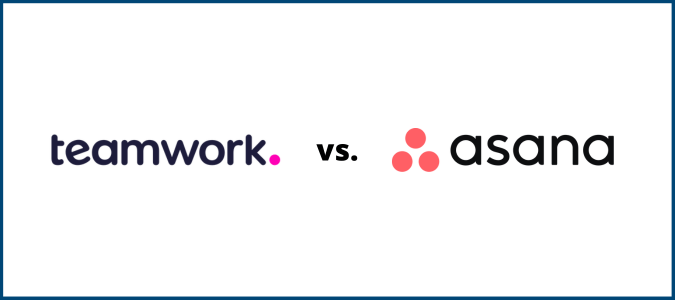For freelancers, agency owners, and full-time employees, managing multiple projects isn’t just a one-time thing—it’s a way of life. But juggling multiple projects can be tricky, and burnout is inevitable without proper organization and planning.
That’s why it’s important to use project management software like Monday.com (and use it right). Doing so makes it easy to assign team members to tasks, track multiple projects at once, and streamline communication with your clients or customers—all from one platform.
But how do you get started managing multiple projects? Here are six easy steps to help you get started.
Crazy Egg’s Favorite Tools for Managing Multiple Projects at Once
At Crazy Egg, we manage a lot of projects and have tried countless different project management software solutions. Our Golden Eggs, which represent the tools we think make our lives easier, are the three best tools for getting the job done.
Monday.com is the best project management software for most. It’s fully customizable and useful for all kinds of team collaboration. Start using Monday.com at just $8 per user per month.
ClickUp is the best remote work platform. It’s by far the most robust solution for keeping entire teams on the same page, with features like task tracking, timesheets, dashboards, and more. You can use ClickUp for free as an individual or go Unlimited for $7 per user per month.
Smartsheet is the best for flexibility. If you have complex projects with lots of team members, Smartsheet could be the best choice. Get started for as low as $7 per user per month.

More Tools for Managing Multiple Projects
Even though these three are our favorites, they aren’t the only options. Many factors go into what makes the perfect project management software for your specific needs, and there are many more options to choose from. In our full review, we break down the specifics of these three companies and others, so you can find the most suitable one.
If one of these three doesn’t work for you, click here to read our full list of project management software.
Step 1: Get Organized
Before you do anything, you’re going to want to get your business structured—if you start taking on multiple projects before having the systems in place to keep them organized, it will be chaos.
Take some time to think about the details of your projects and create a system that works for you. Whether it’s calendar-based, task-based, or project-based depends on your preferences. There are many different tools available to track progress, assign tasks and deadlines, and store files.
Let’s take a closer look at what “getting organized” entails.
Getting set up with project management software
Project management software is a term used to describe tools used to help manage projects. This can include tools to help with task management, time tracking, file storage, and more.

There are a few different kinds of project management software, each with its own benefits.
- Kanban Project Management: Kanban is a project management style based on the Kanban board. This type of software helps teams visualize and prioritize tasks, as well as track progress over time.
- Agile Project Management: Agile project management is an iterative approach to project management that focuses on collaboration, flexibility, and continuous improvement. It’s great for managing dynamic projects with lots of moving pieces.
- Scrum Project Management: Scrum is a framework for managing complex projects that require collaboration between multiple teams. It’s a great way to stay on top of deadlines and keep everyone on the same page.
- Waterfall Project Management: Waterfall project management is a traditional approach to project management. By breaking down projects into stages, it’s easier to track progress and manage timelines.
Once you figure out which project management software works best for your team, it will be much easier to keep on top of multiple projects at once.
Having a predetermined process
We get it—every client needs something different.
We’ve been there, too.
But if you run a freelance or service business that doesn’t have a streamlined process, you’re going to have a really hard time keeping track of multiple projects.
That’s why it’s so important to create a process that works for you. Even if each client has different needs and timelines, setting up a basic workflow will make it much easier to manage multiple projects at once.
For example, set up an onboarding process for new clients that includes a few key steps. This will help you stay organized from the very beginning.
Also, create templates to streamline tasks like invoicing or paperwork. This will save you time and energy in the long run.
Most importantly, be sure to let your customers know your process before you begin working so they know what to expect—if you fail to set proper expectations ahead of time, you’ll risk making the same mistakes with each new project.
Prioritizing and delegating tasks
If you have multiple projects going on at once, it will be hard to stay on top of everything without a system in place for prioritizing and delegating tasks.
Start by creating a list of all your current projects and their deadlines. This will help you stay organized and determine which tasks need to be done first.
Then, figure out what tasks can be delegated to other team members or outsourced. This will help lighten your workload and make sure all the projects stay on track.
Step 2: Set Up Clear Communication Channels
Communication is the most important factor when managing multiple projects at once. Make sure everyone involved—including your team, clients, and stakeholders—is aware of which tasks need to be done and when they’re due.
Set up a communication system that works for everyone—whether that’s email, phone calls, video meetings, or any other platform you prefer. This will help ensure that all the projects are completed on time and without any major miscommunications.

Using Slack, you can set up internal communications channels for each project. Then, you can add your client and each team member to the relevant channels. This way, everyone can stay up to date on tasks and progress in real time.
Most project management software also enables you to collaborate with clients and other stakeholders. When onboarding your new customers, make sure to include this information in the process.
Step 3: Prioritize (and Reprioritize) as Needed
A big part of project management is learning how to prioritize different projects. There are a few different factors that go into which ones should take priority.
To determine the hierarchy of priority, ask yourself the following questions:
How soon is the deadline for this project?
Often, the project with the soonest deadline should take the highest priority. When one project needs to be completed before the others, it’s almost always a good idea to get that one done first.

It helps to create a timeline and set milestones for each project to make sure you’re staying on track. Using project management software, you can keep track of each individual project’s deadlines in one place in order to delegate your resources accordingly.
How will this project impact my business’s bottom line?
The truth is, some projects will have more of an impact on your business than others. Which ones are the most important for your bottom line?
There may be a project that’s not as urgent, but it has the potential to generate a lot of revenue down the road. If so, it might be worth bumping up its priority level to improve your relationship with that client.
Similarly, you might have a project that isn’t worth much money but is taking up a lot of your time. You should always strive to do your best for your clients, but you don’t want to get stuck in a situation where you’re losing money on the project or spending so much time on it that more valuable ones will suffer.
Can I push this project back if I need to?
Sometimes, you’ll work on projects that have strict requirements on the client side.
For example, a software startup that plans to launch an MVP of their product by a certain date would need to have the project completed on time in order to meet their deadlines.
You may also have projects that are more passive or not as time-sensitive. If you come across a situation where there’s not enough time to finish multiple projects, it might be best to push the more flexible project back if possible.
Step 4: Make Use of Automation Tools
If you’re managing multiple projects at once, automation tools can be a lifesaver. These tools are designed to take care of tedious tasks that usually take up a lot of your time, such as scheduling emails or reminding team members about deadlines.

Tools like Zapier and IFTTT enable you to connect different services and create automated workflows. For example, you can integrate your project management software with Slack so that when someone completes a task, they automatically get notified in the relevant channel.
Other automations that can help you monitor and improve the project management process include:
- Business Banking: Legacy banking systems can be a hassle to manage, especially when you’re dealing with multiple projects. Modern FinTech companies like Ramp, Brex, and Divvy offer business banking tools tailored to the modern project manager.
- Business Intelligence: Advanced analytics and artificial intelligence (AI) can help you gain valuable insights into your projects’ performance. Software like Looker, Klipfolio, and Chartio provides real-time visualizations of your data so you can quickly identify any potential issues or areas of improvement.
- Accounting: A huge part of determining how effective your business is at managing multiple projects is understanding the financial aspects. Solutions like QuickBooks, Sage Intacct, and Xero help you track expenses and manage invoices so you can keep your projects on budget.
Automation tools are also great for tracking progress and monitoring key performance indicators (KPIs). You can set them up to track how much time is spent on each task, or how much of the budget is used for each project.
Step 5: Track KPIs to Measure Progress
Speaking of KPIs, tracking them is essential for project management. They allow you to stay on top of how each team member performs and identify any potential issues with the project.

If you use a project management tool like ClickUp, you can even generate reports and dashboards based on KPIs for your team.
A few KPIs to use to track project efficiency and productivity include:
Average Cost Per Hour
When measuring the profitability of each project, you’ll want to track the average cost per hour of work. This value is a great way to determine the project’s ROI and make sure you’re not overspending.
To calculate this KPI, you can use the total project cost divided by the number of hours worked across all employees involved. Cross-reference this value with the project’s budget to make sure you’re staying within limits.
Time to Completion
The time to completion is an important metric for tracking how quickly a project is being completed. It’s a great way to evaluate how efficient your team is at completing tasks and accomplishing goals.
To calculate time to completion, you can use the total duration of a project’s timeline and subtract the time that has been spent on it so far.
Average Task Completion Time
Another important KPI to track is the average task completion time. This metric will help you identify any bottlenecks in the workflow and optimize it for efficiency.
Keep in mind that this will be calculated on a relative scale—you won’t get an exact measure. To calculate it, you can divide the total number of tasks completed by the time taken to complete them.
Step 6: Build Your Team as You Take On More Projects
You won’t have to hire a bunch of full-time employees immediately, but as you take on more projects, you’ll need to bring in additional help. You can’t scale your time, so you’ll eventually need to expand your team.
When looking for new hires, make sure to find people who have the skills and experience needed to help you manage multiple projects. You should also look for candidates that share the same values and vision as you. When hiring remote workers, in particular, it’s important to look for those with strong communication skills.

As you build your team, Step 1 will become increasingly critical—you’ll need to have a set process to teach your new hires so that they can hit the ground running.
As shown in the example above, the same project management tools you use to manage multiple projects can also be used to onboard new employees and get them up to speed.
A few best practices for expanding your team to new projects:
Assemble a team before the project and keep them together.
If you hire contractors throughout different project stages, there’s a good chance that they won’t be on the same page. If you want to ensure that all team members understand the project’s goals, you should assemble a team before you begin and keep them together throughout.
Identify the skills needed for each project.
Hiring someone with the right skills is key to managing multiple projects efficiently. Take some time to identify the specific tasks required for each project and hire accordingly.
This is where it helps to either have a solid network of freelancers or a cohesive team of full-time employees—building project teams is easier when you can do so based on others’ strengths.
Review projected workloads regularly to ensure the team is properly staffed.
Just because you have a team doesn’t mean they can take on every task thrown their way. Be sure to review upcoming workloads regularly to ensure that your team has enough capacity for additional projects.
Make sure that everyone understands their roles and responsibilities.
When you assign tasks to the team, make sure that everyone knows exactly what is expected of them. Clear communication is essential for managing multiple projects successfully.
Use software that centralizes communication and streamlines processes.
We can’t say this enough.
If you’re going to be managing multiple projects, you’ll need a software solution that helps to centralize communication and streamline processes. This will help simplify the process of keeping track of different tasks assigned to team members and ensure everyone is on the same page.















